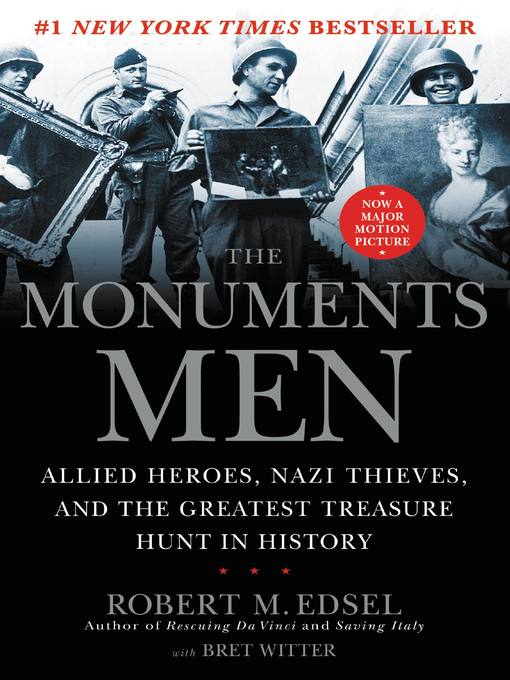
The Monuments Men
Allied Heroes, Nazi Thieves, and the Greatest Treasure Hunt in History
فرمت کتاب
ebook
تاریخ انتشار
2009
Reading Level
7-8
ATOS
9
Interest Level
9-12(UG)
نویسنده
Bret Witterناشر
Center Streetشابک
9781599952659
کتاب های مرتبط
- اطلاعات
- نقد و بررسی
- دیدگاه کاربران
نقد و بررسی

June 22, 2009
WWII was the most destructive war in history and caused the greatest dislocation of cultural artifacts. Hundreds of thousands of items remain missing. The main burden fell to a few hundred men and women, curators and archivists, artists and art historians from 13 nations. Their task was to save and preserve what they could of Europe's great art, and they were called the Monuments Men. (Coincidentally or not, this book appears only briefly after Ilaria Dagnini Brey's The Venus Fixers: The Untold Story of the Allied Soldiers Who Saved Italy's Art During World War II
, Reviews, June 1.) Edsel has presented their achievements in documentaries and photographs. He and Witter (coauthor of the bestselling Dewey
) are no less successful here. Focusing on the organization's role in northwest Europe, they describe the Monuments Men from their initial mission to limit combat damage to structures and artifacts to their changed focus of locating missing items. Most had been stolen by the Nazis. In southern Germany alone, over a thousand caches emerged, containing everything from church bells to insect collections. The story is both engaging and inspiring. In the midst of a total war, armies systematically sought to mitigate cultural loss.

October 15, 2009
Adolf Hitler's plan for the subjugation of the world included its culture and treasures. Art was to be taken from conquered countries and stored in Germany until Hitler could build the world's largest museum complex in his hometown of Linz, Austria. It was the job of the Monuments Men (as they came to be called) to track down these missing treasures during the latter years of the war. This story concentrates on Northwest Europe only, where men (and at least one woman) from 13 nations, largely from professional arts-related backgrounds and past combat age, effectively saved much of European culture from a gang of murderous thieves. This intriguing story, told largely through letters written by the rescuers and now in various government archives, will appeal to many general and military history readers.
Copyright 2009 Library Journal, LLC Used with permission.

September 1, 2009
This is a chronicle of an unusual and largely unknown aspect of World War II. The heroes here arent flamboyant generals or grizzled GIs in combat. In civilian life these men and women had been architects, museum directors, sculptors, and patrons of the arts. They were drawn from thirteen nations, although most were American or British citizens. Beginning in 1943, they were recruited into a special unit formed to protect and recover cultural treasure that had been looted by top Nazis, especially Hitler and Goring. As Allied armies liberated areas of northern Europe after D-Day, these monuments men moved into the front lines. Since they had little advance knowledge of the location of the looted art, their efforts often resembled treasure hunts. In addition to recovering stolen art, they worked tirelessly, often at personal risk, to protect and restore art damaged by the ravages of war. Edsel describes the exploits of these men and women in a fast-moving narrative that effectively captures the excitement and dangers of their mission.(Reprinted with permission of Booklist, copyright 2009, American Library Association.)

























دیدگاه کاربران